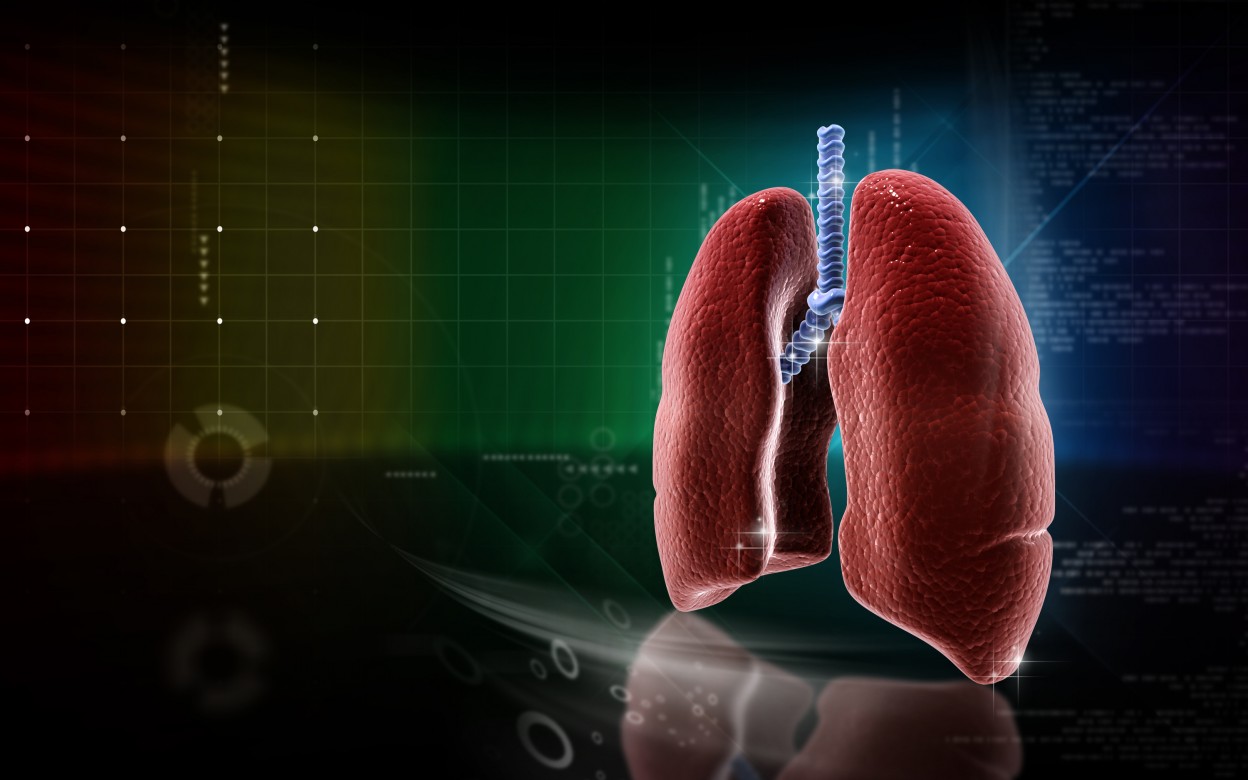COPD Lung Inflammation Can Now Be Studied Using a Chip
Written by |

Scientists have created a model of the human small airway using organ-on-a-chip technology that can help researchers study inflammatory lung diseases like chronic obstructive pulmonary disease (COPD) and asthma outside a patient’s body, and potentially makes it possible to more easily identify new biomarkers and evaluate drug candidates. The study, by researchers at the Harvard John A. Paulson School of Engineering and Applied Sciences (SEAS) and the Wyss Institute for Biologically Inspired Engineering at Harvard University, is titled “Small airway-on-a-chip enables analysis of human lung inflammation and drug responses in vitro” and was published in Nature Methods.
Asthma and COPD are inflammatory lung reactions that can be severely worsened by viral or bacterial infections, or by irritants like tobacco smoke. These processes are known to often occur in the conducting airway sections of the lung that transport air to and from the alveoli (air sacs), but knowledge is limited as to how inflammation leads to different pathological processes, like the involvement of circulating white blood cells and the accumulation of mucus, or even how clinical exacerbations start.
“Inspired by our past work using the organ-on-a-chip approach to model the lung alveolus, we created a new microfluidic model of the lung small airway that recapitulates critical features of asthma and COPD with unprecedented fidelity and detail. Now with this micro engineered human lung small airway, we can study lung inflammatory diseases over several weeks in chips lined by cells from both normal donors and diseased patients to gain better insight into disease mechanisms, as well as screen for new therapeutics,” said Dr. Donald Ingber, the study’s senior author, in a SEAS’ news release.
For COPD and like diseases, interest in organ-on-a-chip technology is particularly high because small airway inflammation cannot be readily studied in human patients or animal models, and there are no effective therapies to stop or reverse the process.
“To closely mimic the complex 3D cellular architecture of actual human small airways, we designed a microfluidic device that contains a fully matured human small airway epithelium with different specialized cell types exposed to air in one of its two parallel micro channels. The second channel is lined by a human vascular endothelium in which we flow medium containing white blood cells and nutrients so that the living microsystem can be maintained over weeks. We then modeled inflammatory asthma and COPD conditions by adding an asthma-inducing immune factor or by setting up the system with lung epithelial cells obtained from patients with COPD,” explained Dr. Remi Villenave, co-first author of the published article. The team used the technology to examine disease- and cell type-specific changes and to exacerbate them using viral or bacterial simulating agents.
“This new organ-on-a-chip technology gives us a window on molecular-scale activities in the context of living human lung tissue. It also provides us with a handle to dissect contributions of specific cell types and biochemical factors to small airway diseases, including how circulating immune cells are recruited to inflammation sites and how compromised cilia function contributes to abnormal mucus clearance in the lungs of diseased patients,” said Dr. Kambez Hajipouran Benam, co-first author of the study.
The research team was able to provide proof-of-principle that the synthetic small airway-on-a-chip could be a platform for the discovery of disease-specific drugs and biomarkers. Working with its partners Pfizer and Merck Research Laboratories, who also joined aided the Defense Advanced Research Project Agency (DARPA) in helping to fund the project, the scientists found a possible biomarker for COPD viral exacerbations and showed that two drugs, aimed at different key molecular components of inflammatory pathways, have the potential to suppress pathological processes in small airway chips tailored for asthma and COPD.
“This novel ability to build small airway chips with cells from individual patients with diseases like COPD positions us and others now to investigate the effects of genetic variability, specific immune cell populations, pharmaceutical candidates and even pandemic viruses in an entirely new and more personalized way; one that will hopefully increase the likelihood of success of future therapeutics,” concluded Dr. Ingber.




